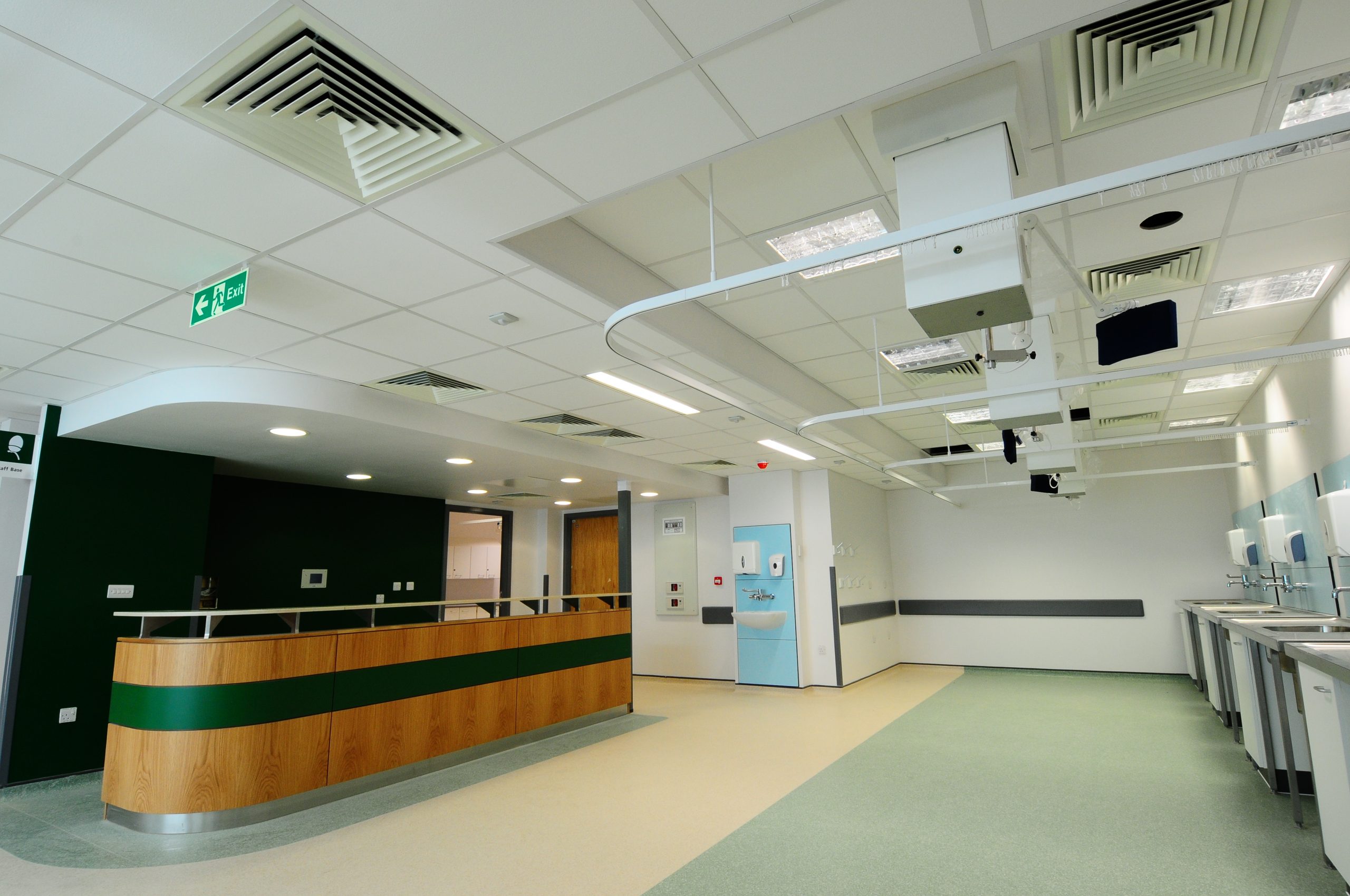Healing ceilings
We’ve all heard of sick building syndrome. The opposite is a healing environment, where design factors help create spaces which actively promote recovery and well-being.

We’ve all heard of sick building syndrome. The opposite is a healing environment, where design factors help create spaces which actively promote recovery and well-being. Ceilings are a quick and cost-effective way to achieve this, as Graham Taylor, sales and marketing director at Zentia, formerly Armstrong Ceiling Solutions, explains.
“Cure sometimes, treat often, comfort always.”
This was written c.400 BC by Hippocrates, the ‘father of medicine’. He recognised the importance of comfort in healing. In her Environmental Theory, Florence Nightingale also paid attention to non-medical factors, identifying fresh air and natural light as being critical to patient recovery. Quite simply, people recover and work better if their environment is pleasant and conducive to well-being.
In construction, the concept of ‘sick building syndrome’ is widely understood, with factors such as poor light, ventilation and even volatile organic compounds (VOCs) causing a range of unpleasant symptoms including headaches and apathy. Building wellness is its positive counterpart.
Wellness is an increasing element of construction and healthcare is perhaps where it’s making most impact. This sector features huge investment in refurbishment and new build, not just of hospitals but also healthcare centres.
Evidence-based research has clearly identified this causal link between environmental design and people’s physiological/psychological well-being. This includes patients of course, but also visitors and staff, where a positive environment can improve productivity and concentration levels.
Creating buildings which actively contribute to well-being and health is captured in the term ‘healing environments’ – in other words, just as Hippocrates and Nightingale promoted, creating the best conditions for recovery. Alongside medical intervention, it’s clear construction also has a role to play in healing.
Many design elements contribute to this, from layout and ventilation through to increased privacy. Two of the most significant, however, are levels of light and noise, both of which can be addressed, quickly and cost-effectively, with the ceiling.
Noise is perhaps the biggest factor, especially in hospitals where there are countless sources including equipment and visitors. This is outlined in the Government’s Specialist Services Health Technical Memorandum (08-01: Acoustics) which lists several serious health issues arising from excessive noise, including increased heart rate, blood pressure and cholesterol levels.
While walls are an obvious place to deliver acoustic solutions, in hospitals they’re often used for equipment. Accordingly, the fifth wall – the ceiling – offers an ideal platform. Ceiling tiles can help absorb and attenuate sound to create customised zones across a hospital. For example, tiles can be used to minimise noise, aiding sleep and privacy, or they can be used to clarify sound – in operating theatres, for example.
Another important factor is optimising the level of light. Ceiling tiles have excellent reflective qualities and can help amplify natural daylight. Many also possess anti-microbial properties and meet hospital standards for fire safety.
Finally, the height of the ceiling itself can create intimacy and help with concentration or provide inspirational spaces. And as ceilings are a building feature that patients generally get to know well; this is well worth consideration.